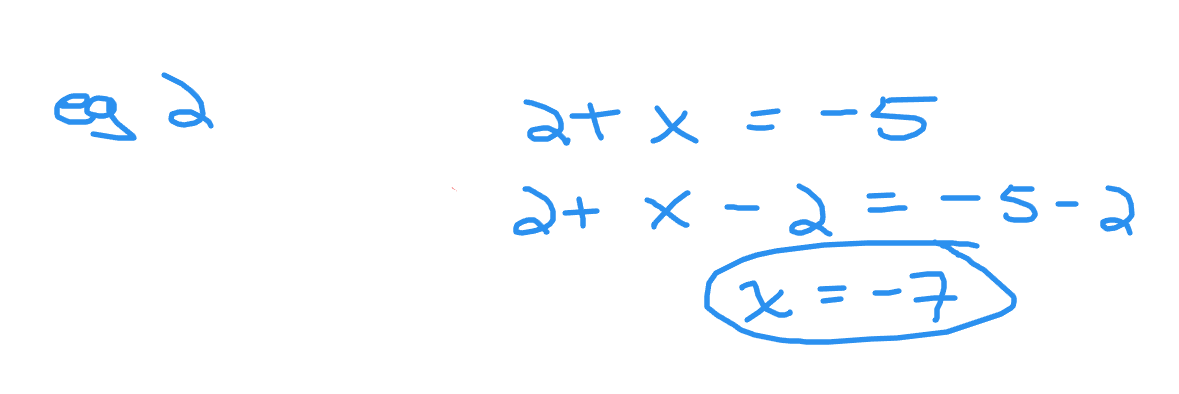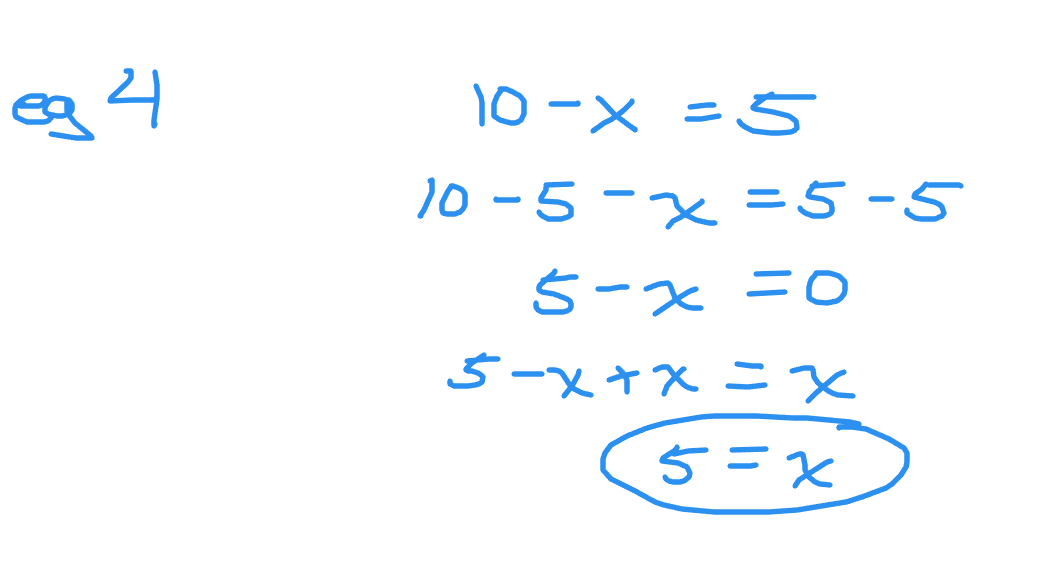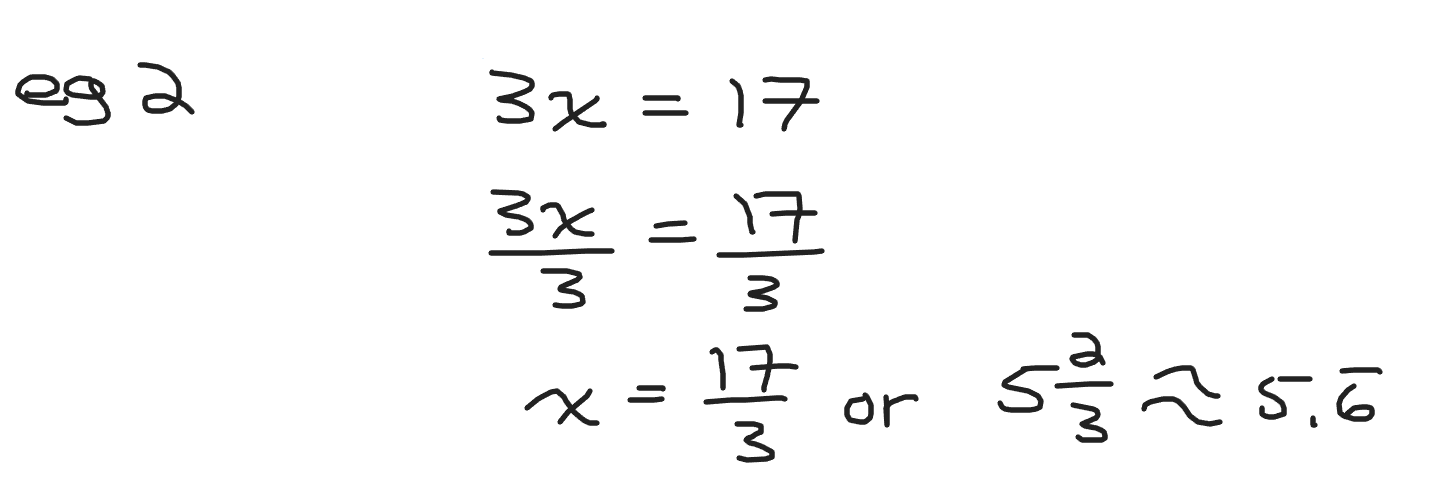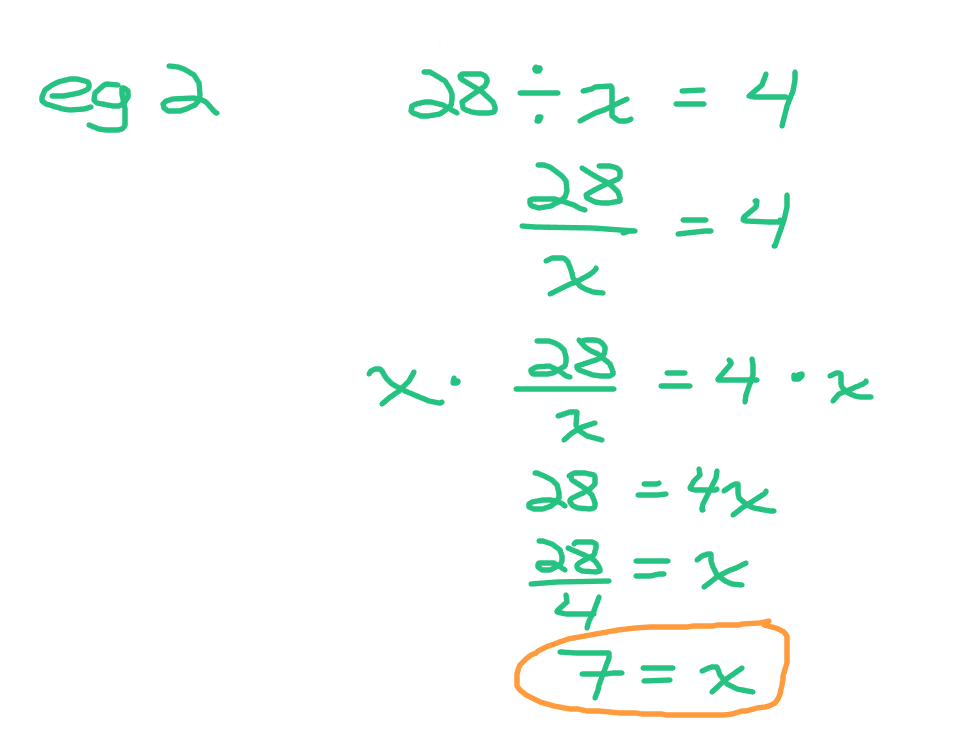Solving Simple Linear Equations
Hi there. In this math guide, I cover solving simple linear equations. Algebra for younger students from grades 5 to 8 sounds scary but if it presented and taught in a simple way the material is not as scary.

Topics
- The Letter x As Unknown Or Blank
- Addition & Subtraction Examples
- Multiplication Examples
- Division Examples
The Letter x As Unknown Or Blank
Before getting into the letter x representing an unknown or missing number, I want to show a few simple examples.
For 3 + __ = 5 the answer to the blank is 2 as three plus two does give five. Instead of blank that can be replaced by the letter or variable x. The question would be 3 + x = 5 with the answer as x = 2.
With 2 x ___ = 10 the answer to the blank is 5. Instead of using a blank replace it with x. You would have 2x = 10 with the answer of x = 5.
Addition & Subtraction Examples
Here are some examples that deal with addition and subtraction.
Example One
Solve for x from x + 5 = 10.
Think of it as something plus 5 gives 10. In this example the answer is 5 so x = 5.
Example Two
From 2 + x = -5, what is the value of x?
For this question think of it as two plus something equals negative five. This example is a little bit more difficult as you have negative numbers. If your number sense is good you know that the answer is negative 7 or x = -7.
To solve this in a more algebraically you would subtract both sides by 2. This would give x = -5 -2 which is `x = -7. Picture screenshot below.

Example Three
Solve for x in x - 8 = 10.
This subtraction example is simple. Think of it as something minus 8 equals 10. The answer here is 18.
Example Four
What is x from the equation 10 - x = 5.
This is ten minus what number is equal to five. The number sense approach would give an answer of 5.
The algebraic approach would be isolate for positive x. This would be done by moving subtracting both sides by five. You would get 10 - 5 - x on the left side and the right side would be 5 - 5 which is zero.
The negative x on the left needs to be dealt with. Add x on both sides. This would result in 10 - 5 = 5 on the left side with the right side being just x. The answer is x = 5.

Multiplication Examples
Example One
What is the value of x from the equation 5x = 50?
Five times something equals fifty is the thinking here. The answer here is x = 10.
The algebra approach would be to divide both sides by 5 to obtain the same answer of x = 10.

Example Two
From the equation 3x = 17, what is the value of x?
The number sense approach of three times something is equal to seventeen is not recommended here. It is easier to do the algebraic approach and divide both sides by 3.

Division Examples
Example One
Given the equation of x ÷ 2 = 5, what is the value of x?
Something divided by 2 is equal to 5. This something is ten.
Example Two
In this example the variable is in the denominator (bottom of fraction). With the equation of 28 ÷ x = 4, what is the value of x?
You could do the number sense approach and ask yourself 28 divided by something gives 4. The answer here is 7. With the algebra approach multiply both sides by x as the x is in the denominator. The equation is now 28 = 4x. Divide both sides by 4 to obtain x = 7.

Posted with STEMGeeks
Very important to know how to solve it

!1UP
You have received a 1UP from @gwajnberg!
@stem-curator
And they will bring !PIZZA 🍕.
Learn more about our delegation service to earn daily rewards. Join the Cartel on Discord.
I gifted $PIZZA slices here:
@curation-cartel(12/20) tipped @dkmathstats (x1)
Send $PIZZA tips in Discord via tip.cc!
Brings me back to middle school.
!discovery 31
This post was shared and voted inside the discord by the curators team of discovery-it
Join our community! hive-193212
Discovery-it is also a Witness, vote for us here
Delegate to us for passive income. Check our 80% fee-back Program
Thanks for your contribution to the STEMsocial community. Feel free to join us on discord to get to know the rest of us!
Please consider delegating to the @stemsocial account (85% of the curation rewards are returned).
You may also include @stemsocial as a beneficiary of the rewards of this post to get a stronger support.